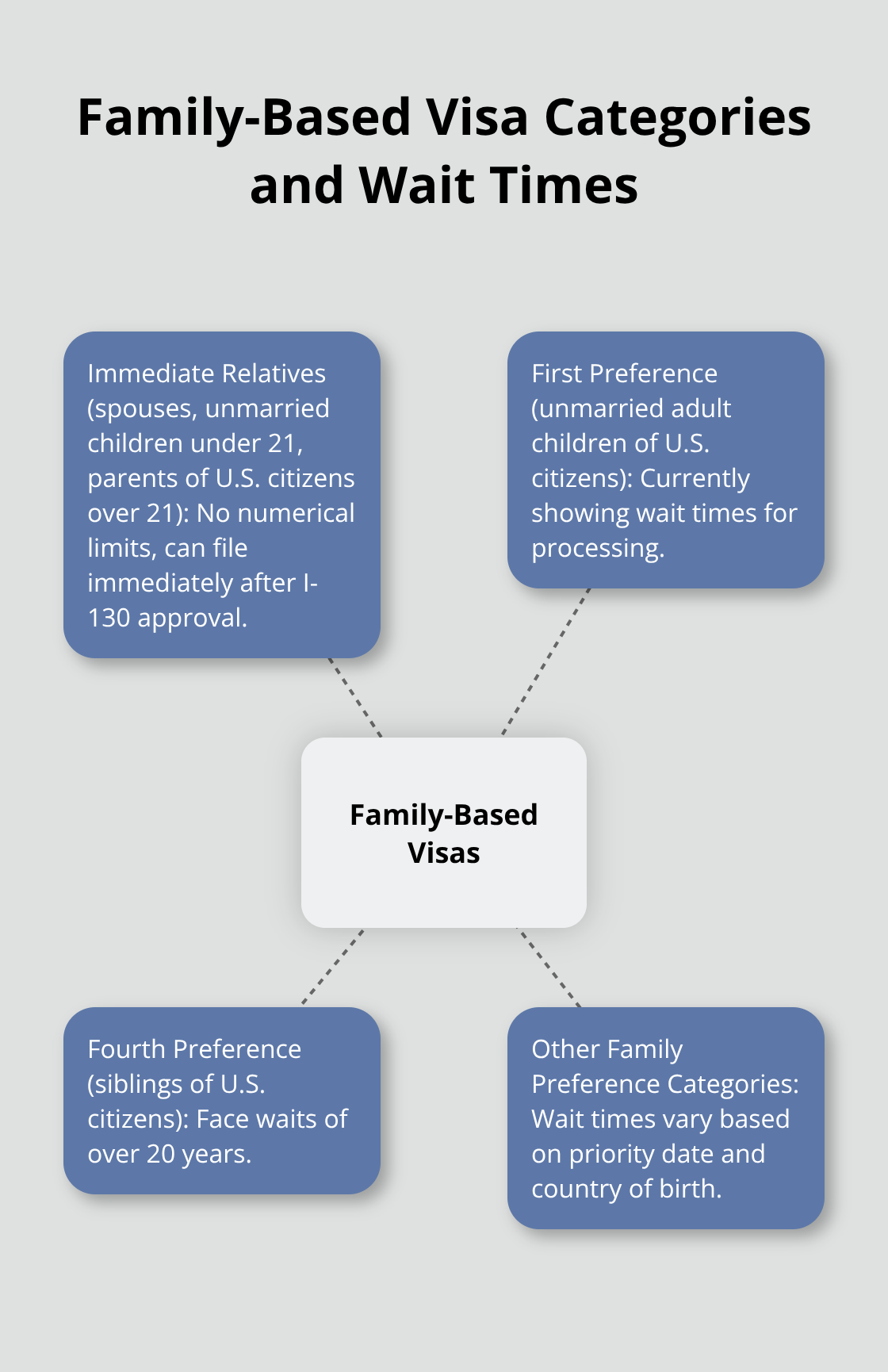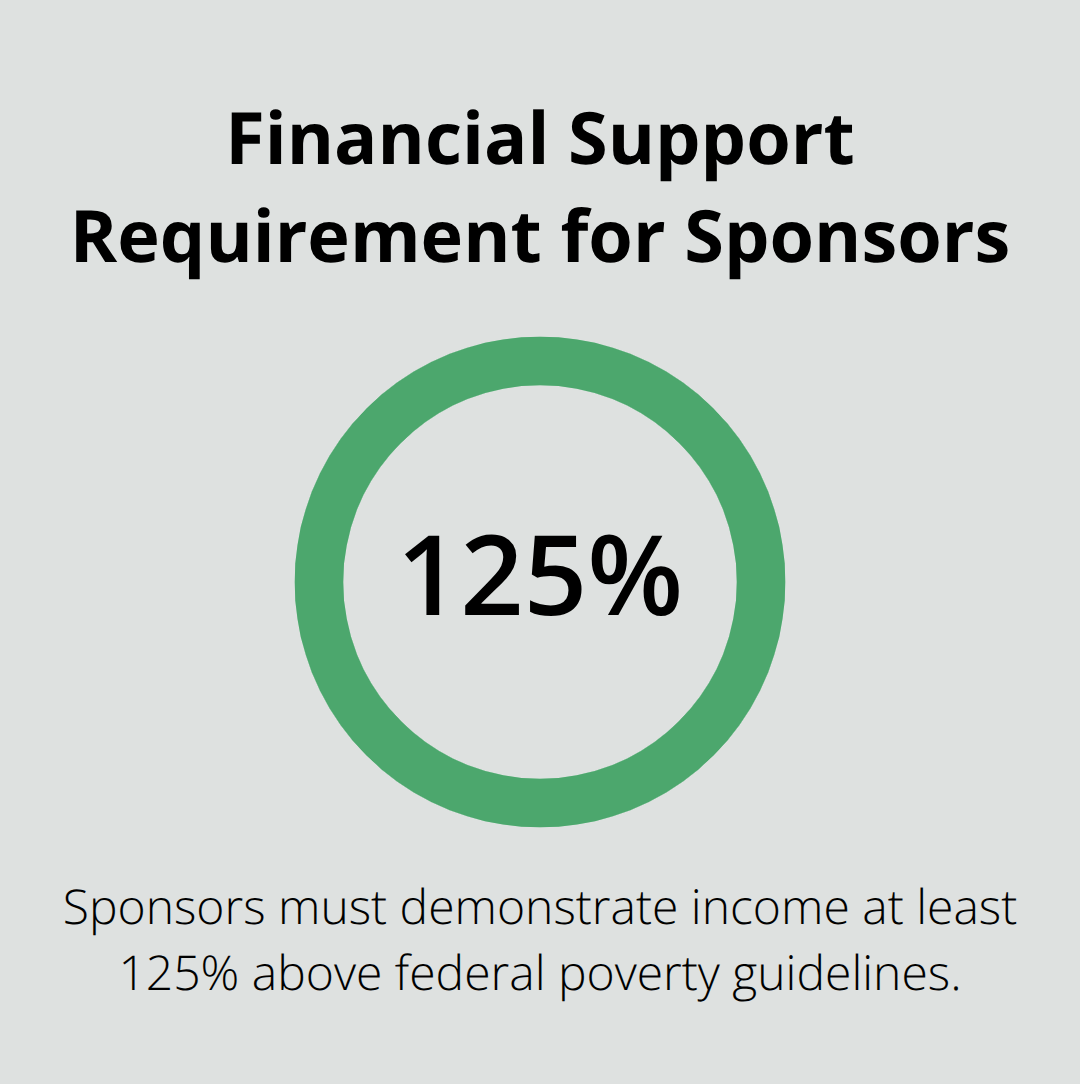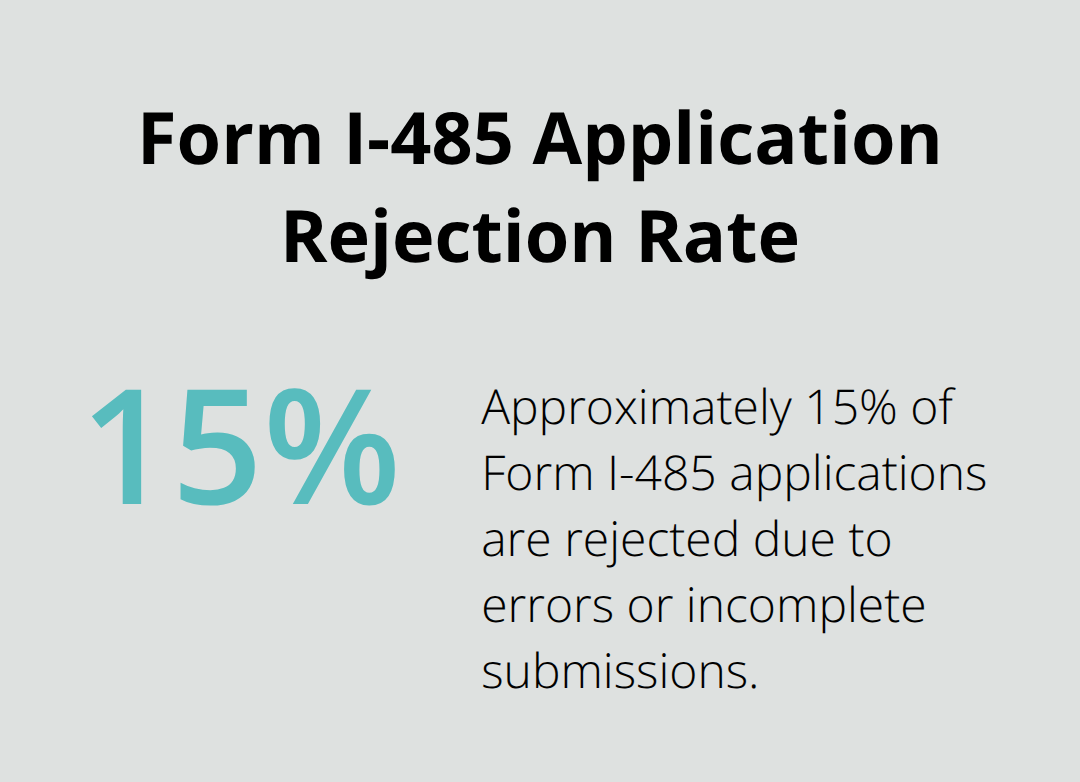
How to File Form I-485 for Adjustment of Status
Form I-485 adjustment of status applications allow eligible immigrants to become permanent residents without leaving the United States. This process saves time and money compared to consular processing abroad.
We at Law Offices of Jeffrey A. Thompson see many applicants struggle with complex requirements and documentation. Understanding the proper steps prevents costly delays and rejections.
Who Can Apply for Adjustment of Status
Immediate Relatives and Family-Based Categories
Immediate relatives of U.S. citizens face no numerical limits and can file Form I-485 immediately after their I-130 petition receives approval. This category includes spouses, unmarried children under 21, and parents of U.S. citizens over 21.
Family preference categories must wait for visa availability based on their priority date and country of birth. First preference applications for unmarried adult children of U.S. citizens currently show wait times for processing. Fourth preference sibling applications face waits of over 20 years.

Employment-Based Applications and Visa Bulletin Requirements
Employment-based adjustment applications depend entirely on visa availability that the monthly Visa Bulletin shows (published by the State Department). EB-1 applications for individuals with extraordinary ability typically remain current and allow immediate filing.
EB-2 and EB-3 applications face significant backlogs, particularly for Indian and Chinese nationals who may wait decades for visa availability. The final action date determines when you can file I-485, not the dates for filing chart. Applications that applicants file before visa availability face automatic rejection and fee forfeiture.
Status Maintenance and Inspection Requirements
Most applicants must maintain lawful status throughout the adjustment process. Unauthorized employment, visa period overstays, or status violations can trigger inadmissibility grounds that complicate or prevent adjustment approval.
Section 245(i) provides limited exceptions for certain applicants who can pay a $1,000 penalty, but this provision only applies to cases with petitions that qualify and were filed before specific cutoff dates. Applicants must demonstrate lawful inspection and admission to the United States, with limited exceptions for immediate relatives of U.S. citizens.
Documentation gaps or status violations require careful legal analysis before you file to avoid costly denials. The next step involves understanding exactly which documents and evidence you need to support your application.
Required Documents and Evidence
Form I-485 demands extensive documentation that USCIS reviews with strict attention to detail. Missing or incomplete evidence triggers automatic rejections that cost applicants months of delays and additional fees. Every application must include two passport-style photographs that meet USCIS specifications, plus a government-issued photo identification document. Your birth certificate provides primary identity evidence, though church records or medical records from early childhood can substitute when birth certificates remain unavailable from your home country.
Medical Examination Requirements
The medical examination represents the most time-sensitive requirement in your I-485 package. USCIS now requires Form I-693 submission with your initial application to prevent rejection. Only civil surgeons that USCIS designates can complete these examinations, and the process typically takes 2-3 weeks to schedule and complete. Forms that civil surgeons sign after November 1, 2023, never expire according to current USCIS policy, but older forms still face validity periods. Vaccination requirements include COVID-19, MMR, and seasonal flu shots based on your age and medical history.
Financial Support Documentation
Form I-864 Affidavit of Support creates binding financial obligations for most family-based applications. Sponsors must demonstrate income at 125% above federal poverty guidelines. Joint sponsors can supplement primary sponsors who fail to meet income thresholds, but each sponsor faces identical legal obligations.

Tax transcripts from the past three years provide the strongest income evidence, while W-2 forms and employment letters serve as secondary documentation. Self-employed sponsors need additional business tax returns and profit-loss statements to satisfy USCIS requirements.
Identity and Status Documentation
Police clearance certificates become necessary if you have criminal charges or convictions in any jurisdiction. Court records must accompany these certificates to provide complete documentation of any legal issues. Previous immigration documents prove your lawful entry and status maintenance throughout your stay in the United States. These documents include I-94 arrival records, visa stamps, and any previous USCIS approvals or extensions that demonstrate continuous legal presence.
The next step involves understanding exactly how to complete Form I-485 correctly and navigate the submission process without errors. For marriage-based adjustment of status applications, additional documentation requirements apply that strengthen your case significantly.
How to Complete and Submit Form I-485
Form Completion and Common Errors
Form I-485 spans 18 pages with over 200 questions that demand precise answers. USCIS rejects applications with incomplete signatures, missing dates, or blank mandatory fields at a rate of approximately 15% according to agency statistics. Download only the current version from the USCIS website, as outdated forms face automatic rejection regardless of content accuracy.
Complete every section in black ink with clear, legible handwriting that scanning equipment can process without errors. Part numbers and question sequences must follow exactly as printed, and any corrections require complete form replacement rather than cross-outs or white-out applications. Inconsistent information between Form I-485 and supporting documents triggers requests for evidence that delay processing by 3-6 months on average.

Payment Processing and Fee Structure
Filing fees for Form I-485 start at $1,440 for most applicants, with additional charges of $630 for work authorization and $630 for travel documents when filed concurrently. USCIS accepts money orders, cashier’s checks, personal checks, or credit card payments through Form G-1450, but cash payments face rejection at all processing centers.
Write separate checks for each form to prevent total package rejection if one payment fails processing. Include your full name and A-number on memo lines to prevent payment misallocation that causes months of delays. Fee waivers remain unavailable for Form I-485 except for specific humanitarian categories (like Afghan parolees who apply as special immigrants). For detailed information about current costs, review the adjustment of status fee in 2025.
Submission Methods and Package Assembly
Assemble your application package in this specific order: payment method, required forms, supporting documents, and evidence. Documents submitted should be legible, free from blurs or distortions, and should not be stapled or placed in binders. Mark the envelope and cover letter clearly with the type of submission and specific form number to maintain proper routing.
Mail your application to the exact address listed on the USCIS site for Form I-485 to avoid rejection due to incorrect filing locations. You can use major courier services like USPS, FedEx, DHL, or UPS for mailing your application, but keep a tracking number for your records.
Processing Timeline and Status Tracking
Check processing times by selecting your form, form category, and office through the USCIS system. Biometric appointments typically occur 4-6 weeks after filing, and missing this appointment triggers automatic case closure without refund options.
Interview scheduling follows 6-18 months after biometrics for most family-based cases, while employment-based applications often receive approval without interviews. Track your case status through the USCIS online portal using your receipt number, and respond to any requests for evidence within the specified timeframe to prevent denials. Address changes must reach USCIS within 10 days using Form AR-11 to prevent missed communications that could result in case abandonment (which happens more frequently than most applicants realize). If you need to travel after filing for adjustment of status, you’ll need to file Form I-131 for advance parole.
Final Thoughts
Form I-485 adjustment of status applications demand precise attention to detail and complete documentation from the start. Applicants must download the current form version, maintain legal status throughout the process, and submit all required evidence with their initial application. Missing documents or incomplete forms trigger automatic rejections that cost months of delays and additional fees.
Common mistakes include applications filed before visa availability, outdated forms, insufficient financial support evidence, and missing Form I-693 medical examinations. Payment errors and incorrect mailing addresses also cause frequent rejections that applicants can prevent with careful preparation. These errors account for approximately 15% of all rejections according to USCIS processing statistics.
Complex cases with criminal history, previous immigration violations, or unusual circumstances require professional legal guidance to navigate successfully. We at Law Offices of Jeffrey A. Thompson help clients overcome immigration challenges and address potential issues before they become costly problems. Attorney Thompson provides dedicated representation for immigration matters and handles paperwork complexities that can derail applications.


